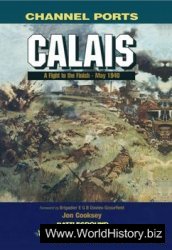The Chalcolithic (c. 4700-3500 BC) was a period of major change throughout societies of the southern Levant. Basic food production systems of the Neolithic gave way to new subsistence strategies and technologies, and broad changes in overall economic organization (e. g., the rise of craft specialization) are evident. Changes in social organization as well have been observed with early signs of social inequality and the emergence of elite groups.
Key Sites/Settlement Patterns
The Chalcolithic culture spread across most of the southern Levant, from the south, near Eilat, up to the Golan in the north, and from the Mediterranean coast east past the Rift Valley (Figure 1 ). One of the most important settlement sites, Teleilat Ghassul (Jordan), has been treated as a ‘type site’, though it may have been abandoned before the end of the period. The Beer Sheva sites of the northern Negev (e. g., Abu Matar and Bir es-Safadi) have also been treated as ‘type sites’, though they were not occupied during the earliest part of the Chalcolithic. Other key sites include the cluster of settlements that comprise the Golan subregional culture and Grar, Gilat, and Shiqmim, in the northern Negev. There was a sizeable mobile (e. g., pastoral-nomadic) population in the region as well in addition to the settled peoples. Shiqmim has the only extramural cemetery that is directly related to a Chalcolithic settlement, though in recent years a number of very important cave tomb sites have been discovered. These tombs include Peqi’in, Nahal Qanah, and Givat Ha-oranim. The most spectacular of all the cave sites is Nahal Mishmar, also known as the Cave of the Treasure because of the hoard of over 400 metal artifacts discovered there.
Diagnostic Features
Chalcolithic material culture is usually easily distinguished from that of other periods, though internal subchronologies are still lacking. Key diagnostic features include ceramic forms such as V-shape bowls, churns, and hole-mouth jars with lug handles; red painted bands are a common form of decoration. Several distinct classes of sculpted figurines have been observed, including the schematic ‘violin-shape’ figurines (Figure 2), the more naturalistic ivory figurines, ‘pillar’ figurines, especially in the Golan, and human heads made of basalt. Basalt was also used to make a range of vessels, most notably bowls and fenestrated stands. The lithic assemblage is noted for axes and awls, along with a variety of blade tools, including microblades made from a fine flint, and ‘fan-shape’ scrapers made from the so-called tabular flint. A novel material at the time was metal, mainly copper and copper with arsenic and antimony, along with one rare instance of gold and gold ‘alloys’.




 World History
World History









